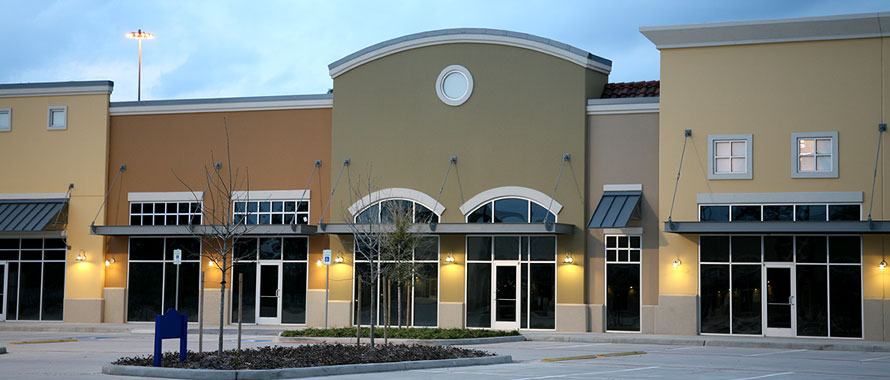Typically, standard carriers handle shopping center coverage with policies most often including Commercial General Liability (CGL) and Property coverages. However, there are special circumstances when a standard CGL policy will not work for a client. That is when it is time to talk to a specialty broker about an Excess and Surplus policy.
According to the experts at Burns & Wilcox, every broker and agent should refer to these three considerations prior to placing their next Shopping Center policy and use them to determine when it may be time to work with an E&S specialist:
1. The Tenants
“The first thing a broker or agent should look into when writing a Shopping Center policy is who the various tenants are in the building(s),” said Jessalynn Suda, Associate Director, Special Risk Division, Burns & Wilcox. “It’s important for brokers and agents to be aware of their client’s tenants’ businesses and the risks associated with their operations.”
From bars and restaurants that have increased risk to parking lot disputes and property damage to gun stores that have higher theft exposures, brokers and agents need to understand whether their client’s renters are higher-hazard tenants and how those occupants impact the way a shopping center’s insurance policy should be written.
“When brokers and agents turn to a specialty broker, it typically means that there is a unique tenant situation or loss issue at the shopping center that the standard markets cannot write,” added Suda. “We once worked with a shopping center that had an arts and crafts tenant who hosted weekly woodworking classes. Many people would not think twice about leasing space to a woodworker–however, an insurer needs to consider all the risks associated with each tenant. For the woodworking classes, the increased risk to fire and the need for a ventilation system for sawdust control could be the difference between a standard policy or heading to the non-admitted markets.”
2. The Climate
“Understanding weather patterns in the area and the various elements that shopping centers are exposed to throughout the year is imperative to writing a policy that truly encompasses all of the risks retail building owners face,” said Tyson Peel, National Property and Casualty Manager, Burns & Wilcox Canada. “Buildings located in regions prone to disastrous weather events, like nor’easters or hurricanes and, to a lesser extent, more common seasonal weather such as snow or hail possess significantly increased risks.”
The most common claim shopping centers face, according to Peel, is slip and falls in common areas and in parking lots of buildings. In areas prone to snow and ice, these types of claims occur more frequently.
“If a slip and fall occurs, the injured typically go after everyone involved at the property–any contractors involved with the maintenance and cleaning of the facilities, the store owners, the property managers, and eventually the property owners,” said Peel. “It is important to have a clearly defined insurance policy that delineates responsibilities among each of the parties and ensures that these claims do not have a harmful impact on the property owner’s business operations.”
In addition to regional weather patterns in the shopping center’s location, wind damage poses a significant risk to all retail building owners and should be written into any Shopping Center policy. In fact, windstorms cause around $1 billion in damages in the United States annually.
“A wind insurance provision should be included in any Commercial Property policy–especially Shopping Center coverage,” said Suda. “Retail locations with large glass storefronts are exposed to a great deal of risk from wind damage and must be adequately insured.”
If a shopping center is in a high-risk area where standard insurers exclude certain types of environmental and wind insurance, it may be time for brokers and agents to seek the advice of an E&S specialist.
3. The Region
“We tend to see more claims in economically-depressed areas,” said Suda. “This can cause standard carriers to shy away from insuring shopping centers in these at-risk regions.”
Brokers and agents working with shopping centers located in areas that are economically depressed or that have higher incidence of crime may also need to turn to E&S coverage to meet their client’s needs.
Carriers also often exclude assault and battery coverage from Shopping Center policies, but it is a risk that shopping centers in areas with higher crime rates face, according to Suda.
“When examining a policy, brokers and agents need to understand that shopping centers are exposed to substantial risk when assault and battery is excluded,” added Suda. “Especially if the shopping center has a bar or restaurant with a liquor license where the shopping center could be held liable for the actions of the patrons.”
Although the shopping center’s tenant base, weather exposures and location are the first three considerations when placing a client’s policy, brokers and agents should be readily prepared for more questions.
“These are the most common items we see when writing shopping center coverage today,” said Peel. “However, there are additional specialty risks that brokers and agents should be aware of, including Terrorism for high-foot-traffic malls in globally prominent areas or Accidental Death and Dismemberment for shopping centers with amusement rides. Each shopping center poses unique risks that brokers and agents need to account for when placing a policy.”



